
Zumwalt Prairie Preserve Invites Gazing, Inspires Gardening
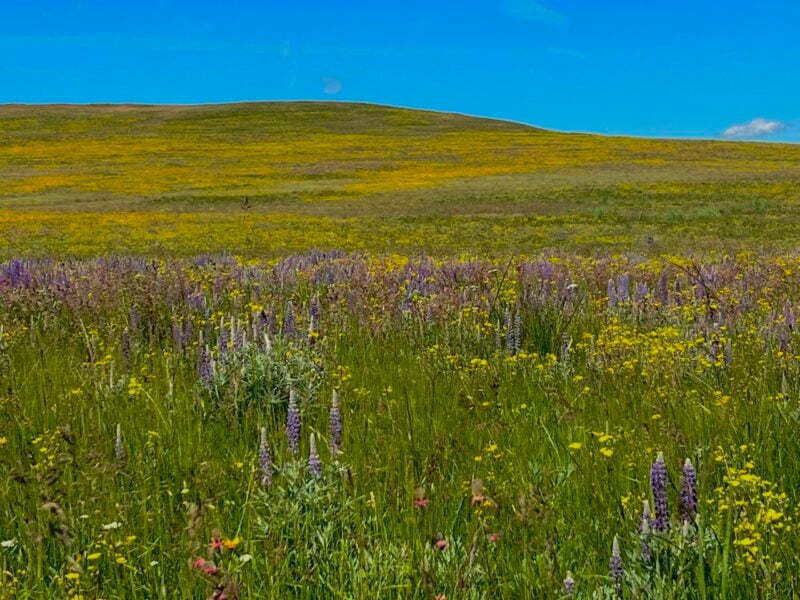
Contributor
- Topics: Growing for Biodiversity
Fall 2023
In Northeast Oregon near the small town of Enterprise lies a little-known jewel, the flower-filled 33,000-acre Zumwalt Prairie. Its farmland entrance is unmarked, but easily discernable by vast expanses of wildflower-strewn grasslands. In early summer, the beginning of the wide gravel road that runs through the prairie is bordered on both sides by four-inch-four foot tall (non-native) sweet clover (Melilotus officinalis) standing at attention, the electric yellow hue marking a vivid entry to the surrounding meadows of undulating yellow, white, blue, and pink wildflowers.
When we were there on the Fourth of July in 2022, dark cloud shadows sped across the landscape. In the distance, verdant green hay fields reclined at the feet of the snow-decorated peaks of the Blue Mountains of the Wallowa-Whitman National Forest, also referred to as the Oregon alps. These scenes were the rule for the next few hours of travel through the prairie (except for the sweet clover which was only at the entrance). Wildflower meadows carpeted broad sweeping hills, the plant composition changing subtly with exposure, soil moisture levels, and slope, resembling an enormous earth-bound tapestry woven over the land. There are “nearly 500 plant species in 69 families,” according to the What’s in Bloom handout by the Nature Conservancy, which owns and manages the prairie.
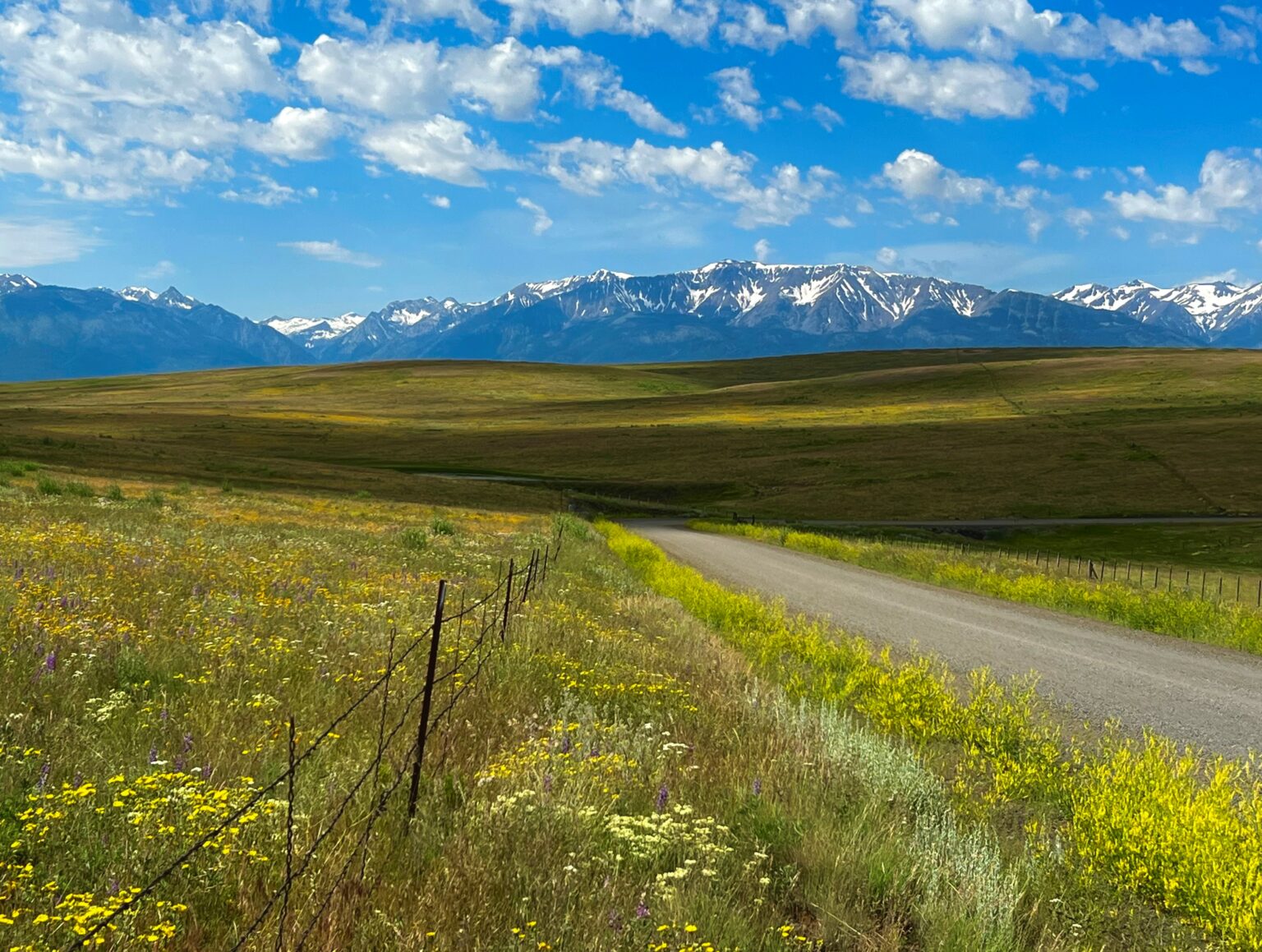
During our visit, upright spires of blue and purple lupine and penstemon contrasted with deep pink sticky geranium (Geranium viscosissimum), yellow daisy-like flowers, and horizontal umbel-like flowers of pale yellow arrowleaf buckwheat (Eriogonum compositum) and white yarrow (Achillea millefolium). Silver-foliaged low sagebrush (Artemisia arbuscula), and velvet lupine (Lupinus leucophyllus) offered a contrast to the otherwise green landscape. Prairie smoke (Geum triflorum) created hazy pools of pink and delicate green grasses provided a lush base for the flowers. We stopped often to look at the radiant landscape against the dark surrounding mountains. The delicacy of wildflowers amassed to create a vast, unparalleled landscape.
The barbed-wire fences, fence posts strung above the ground, and lichen-decorated rock pile corner braces—features as much a part of the landscape as the flowers—revealed the rocky nature of the soil. The arthritic and highly knotted wood posts are split native juniper, long bleached gray by the elements. A couple of aged shacks leaned tiredly, and, besides a few scattered ranch buildings, were the only structural elements that interrupted the largely treeless prairie.
Besides superlatives of scene, the prairie has rare superlatives of scale. The 51-square-mile Zumwalt Prairie is the largest intact bunchgrass prairie in the US, but a small remnant of the formerly vast Palouse grasslands. It is bordered on the southeast by Hells Canyon, the deepest gorge in North America. High peaks in the Wallowa-Whitman form a dark fortress on the horizon. Recently protected, The Nature Conservancy purchased 27,000 acres of the prairie in 2000, and another 6,065 acres in 2006. The US Department of the Interior has also designated 4,400 acres as a National Landmark.
The Nature Conservancy manages the prairie to “advance and support conservation across the larger Zumwalt prairie, while also providing high-quality and diverse habitat for native species on the preserve.” Cows are a common sight across some of the prairie, and sustainably graze in frequent rotations, helping to manage the prairie and support local working ranches. Historically elk, deer, buffalo, and the Nimíipuu (Nez Perce) Tribe’s horses grazed the area. Ongoing grazing management studies in many areas of the prairie—for cattle as well as elk and deer—aim to determine the right rotations and population numbers to maintain targeted species like the Columbian sharp-tailed grouse (Tympanuchus phasianellus columbianus), the Spalding’s catchfly (Silene spaldingii), as well as songbirds, raptors, and pollinators. The prairie is noted for its large population of red-tailed, ferruginous, and Swainson’s hawks (Buteo jamaicensis, B. regalis, and B. swainsoni). Thirty percent of the pollinators are bumblebees.
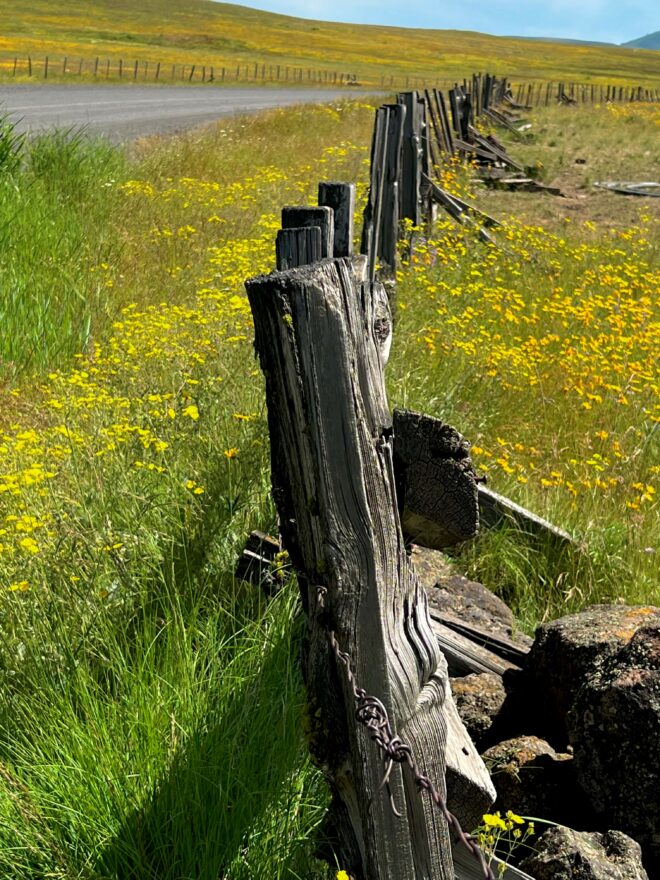
The gravel road through the prairie, though not well marked, is wide, very well maintained, and doesn’t have steep grades. Four two-mile-long trails give an immersive prairie experience. Most are easily accessible, except for the Canyon Vista Trail which needs a high-clearance vehicle. The small Nature Conservancy visitor’s kiosk off the main road has a map, information about the prairie, and information leaflets listing the pollinators, birds, mammals, and wildflowers seen there. A chemical toilet should be available. Dogs are not allowed on trails but are on roads.
The main Zumwalt Prairie road eventually passes through the prairie to the scenic ponderosa-pine-studded high ridges of the Wallowa-Whitman National Forest and ends up at Buckhorn Overlook at Hell’s Canyon—a site with incredible views, the Snake River far below (US Forest Service).
In 2022 the spring was long, moist, and cool with three inches of rain in June—generating the green lush, brilliantly-hued landscape we experienced. Spring 2023 was very dry in eastern Washington and Oregon. We visited the Zumwalt Prairie on May 25 and again on June 18. The difference in the landscape between 2022 and 2023 was notable. Still an immense and inspiring scene worthy of lingering in, it was in general far less floriferous and far drier than the wet year of 2022. We met a couple from La Grande, Oregon, at the visitor’s kiosk who visit the prairie often. They said, “Every year is different.”
The best time for wildflower viewing is late May to June and into early July. Even in years of profuse bloom on weekends, you are likely to see few people there. In 2022, we saw just one person all day. The quiet is part of the beauty.
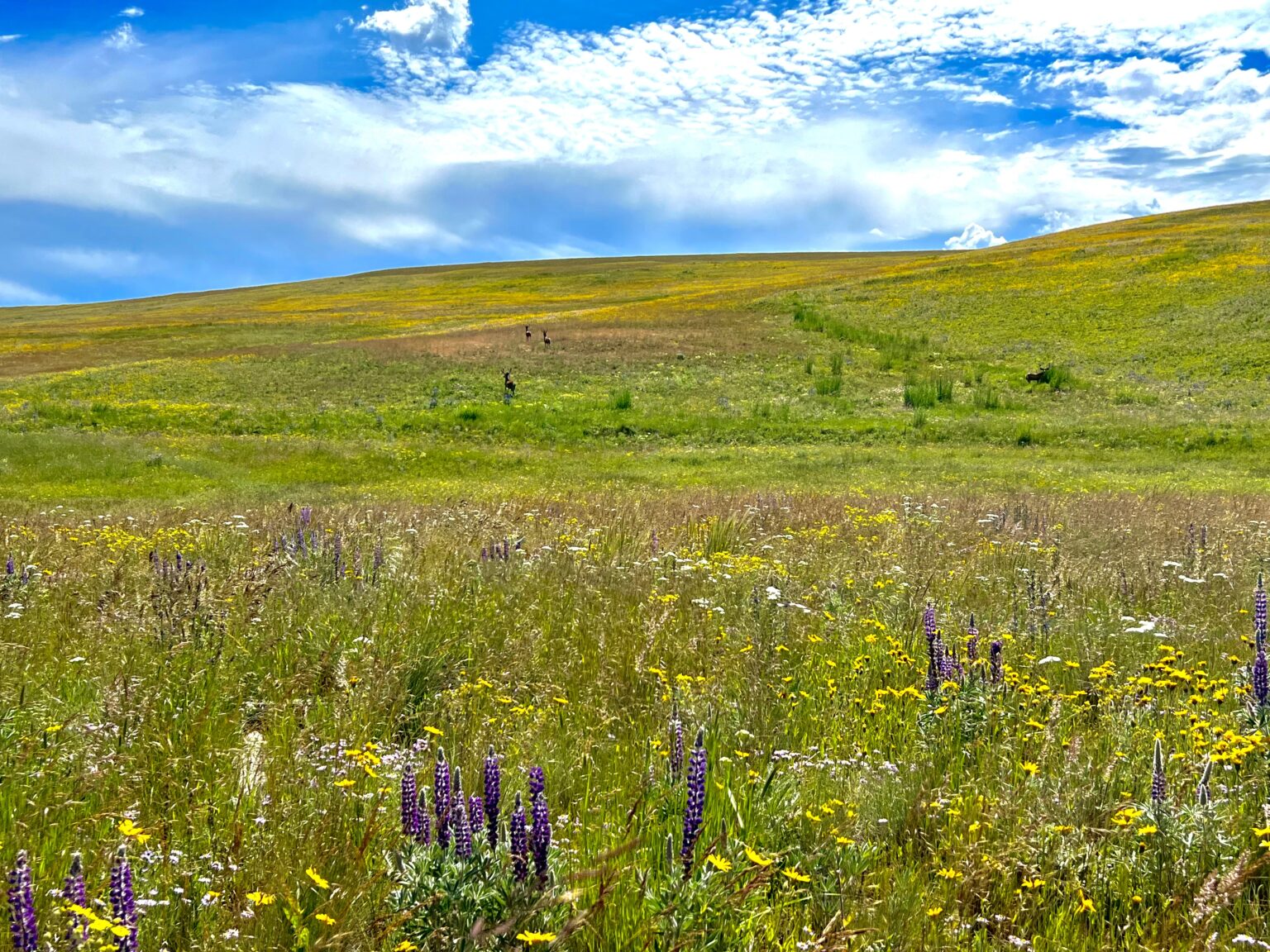
Creating your own flower meadow
Visiting wildflower meadows is top of many travel lists. Rather than traveling to a meadow, it is possible to create your own, but what looks spontaneous and natural takes some planning. Mixed perennial and annual wildflower meadows are often impressionistic in composition, with a variety of flowering plant species interspersed with grasses. While there are good resources describing how to put these together, much can be learned about composition from studying photos of these meadows. Nature is an excellent teacher.
Plant choice should vary by region and soil type and can include natives and non-natives. What will thrive in one area won’t in others. Wildflower meadows, if planted with suitable plants, can be excellent places for pollinators to forage and nest.
Annual or perennial? The best scenario is both. Spring-blooming annuals are amazingly vivid but have a short bloom period and then die. Perennial plants generally bloom longer. Making your main plant framework perennial plants and grasses and adding in annual wildflowers between plants will give you the longest season of interest. If the annual wildflowers are suited to the site, some should reseed. Bulbs are another natural addition to the wildflower meadows and can extend the season of interest greatly. Choose appropriate species for the plant composition and size of your meadow. For low-growing plantings, use smaller bulb species. Large King Alfred daffodils (Narcissus ‘King Alfred’) will look out of place in a delicate meadow, but miniature daffodils (Narcissus spp., several cultivars) won’t. Many bulb catalogs carry some natives.
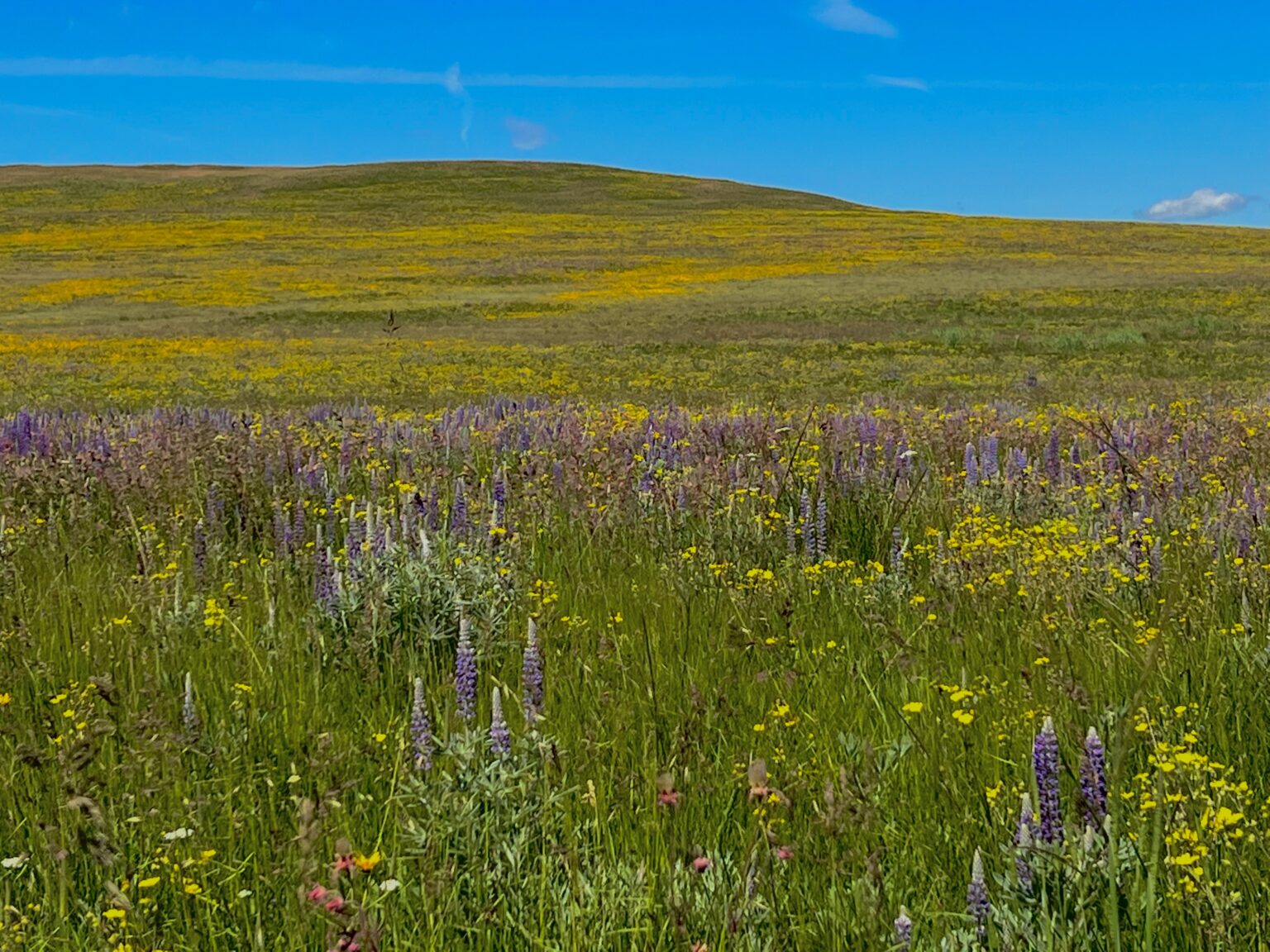
Start with a weed-free site. Mulch afterward. Prevention is much easier than reaction. Easily prevent weeds by laying landscape paper over the soil before planting and topping with mulch afterward, and layering if needed. The paper can be layered. Put drip lines on top of the paper.
Create healthy soil by mulching with compost or composted green waste. If your soil is compacted, dig in a few inches of compost before planting, then mulch to minimize weeds.
Select a majority of plants that grow roughly to the same height. Two feet or less, or all 2–4 feet. I’ve seen several wildflower gardens where very large grasses—4–6 feet tall—tower over low-growing plants. The large grasses end up looking ungainly and out of place.
Plant so foliage and flowers just intermingle when mature. The most beautiful meadows have very little soil showing. Bare soil is an invitation to weeds.
More on Meadows from Pacific Horticulture
Use a percentage of grasses and grass-like plants like sedges (Carex). Evergreen grasses like native fescue, Idaho fescue (Festuca idahoensis), and Mendocino reed grass (Calamagrostis foliosa) provide interest year round. Grasses also act as green or gray foils to flowering plants and create a feeling of naturalness and grace.
Some people view garden design as “less is more,” but long-blooming meadows generally have a large variety of species that repeat over and over. In very large flower borders I have used well over 20–30 species, and with smaller borders, less.
The choice to use only natives or mix non-natives in is an individual one. Consider blooming season. Combine plants that bloom early in the season with those that bloom midseason and late season for a long season of interest and floral resources for pollinators.
There are some general guidelines for plant combinations to “weave” a meadow tapestry. Group plants in small numbers, like between 1–5. Large swaths of the same plant look great when in bloom. When out of bloom or peak form, the swath looks unsightly. Use fewer large plants, placing them in groups of 1–3. Intersperse them with medium-size and low-growing plants in groups of 1–5. Constantly vary the group sizes. The planting should appear random and natural.
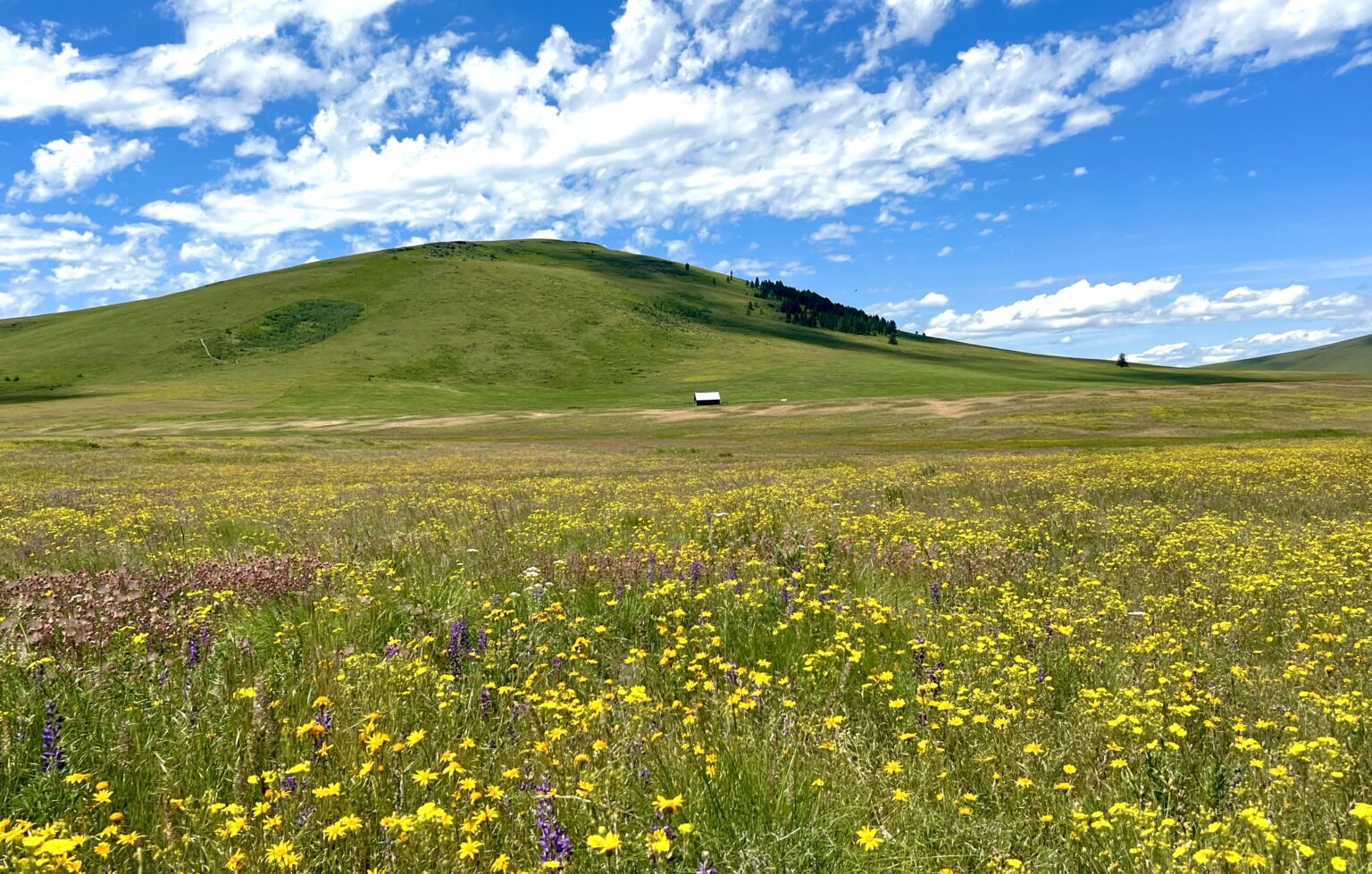
Use plants with different flower forms. Combine plants with large and small daisy flowers like blanketflower (Gaillardia), Oregon sunshine (Eriophyllum lanatum), and fleabane (Erigeron) with plants that have flower spikes like penstemon, lupin, meadow sage (Salvia nemerosa), and hummingbird mint (Agastache). Add plants with umbels or umbel-like flowers, like yarrow, and tubular flowers like monkeyflower. Plants that billow like calamint (Calamintha), catnip (Nepeta) and coyote mint (Monardella villosa) look good next to upright growers like hummingbird mint.
Native annual wildflowers that work well in meadows in many climates are farewell-to-spring (Clarkia), smaller scorpionweed (Phacelia), meadowfoam (Limnanthes douglasii), California poppies (Eschscholzia californica) in shades other than orange, baby-blue-eyes (Nemophila), purple Chinese houses (Collinsia heterophylla), bird’s eye gilia (Gilia tricolor), hayfield tarweed (Hemizonia congesta), and grand linanthus (Linanthus grandiflorus).
Irrigation
Depending on the region, plant selection, and weather, some people may not need to irrigate. Others will need to irrigate regularly. A grid-type drip system using emitter tubing works well for wildflower meadows. Annual wildflowers and bulbs if planted in the fall usually don’t need irrigation.
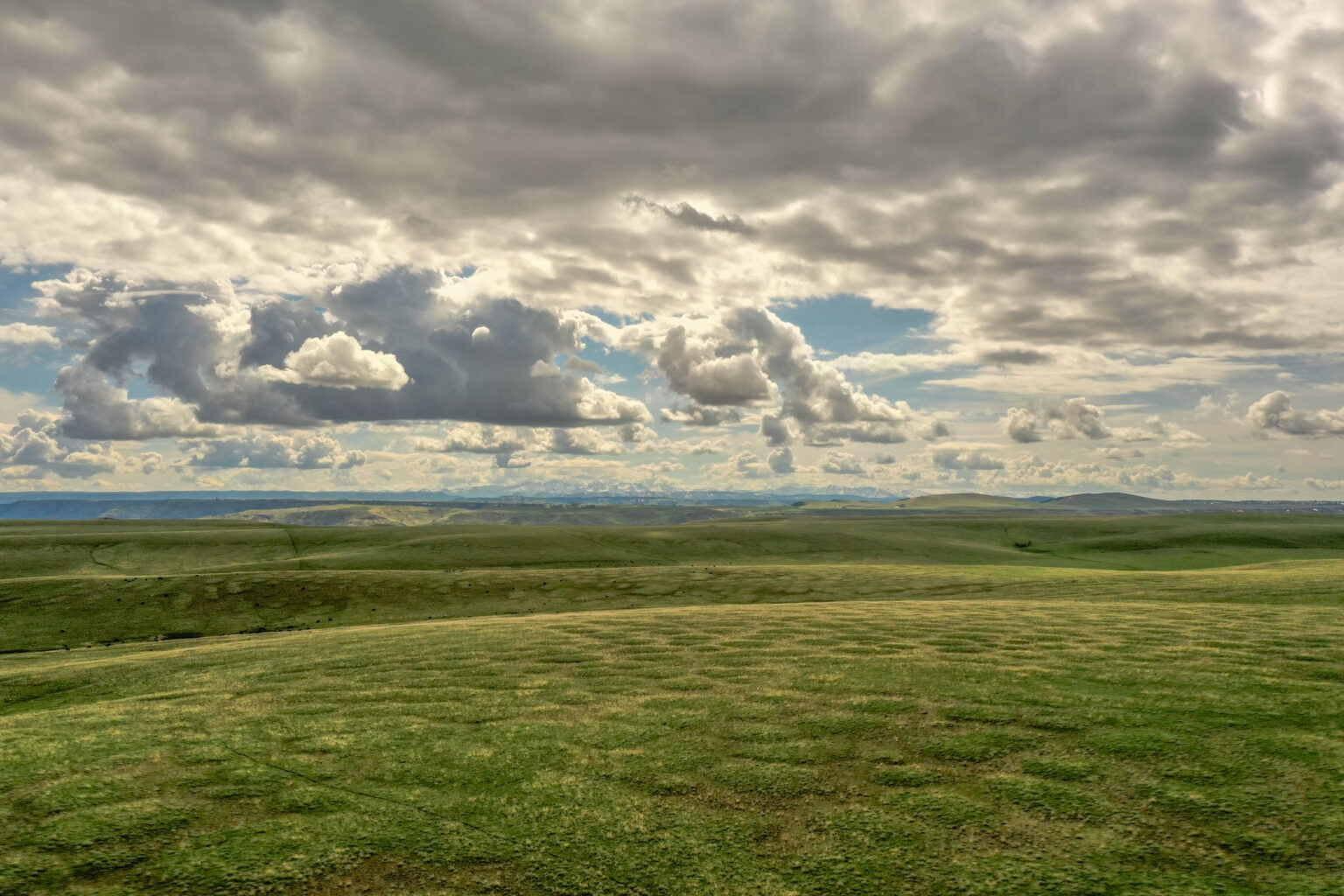
Resources
The Nature Conservancy (541-426-3458 and oregon@tnc.org) manages Zumwalt Prairie Preserve. A comprehensive plant list is available through the Conservation Gateway.
Springer, Lauren. 1994. The Undaunted Garden. Golden: Fulcrum.
Oudolf, Piet and Kingsbury, Noel. 2013. Planting; a New Perspective. Portland: Timber Press.
Dunnett, Nigel. 2019. Naturalistic Planting Design. Filbert Press.
US Forest Service. “Buckhorn Tower Viewpoint.”
Pacific Horticulture | Sweet Meadows by Daniel Mount

















Responses